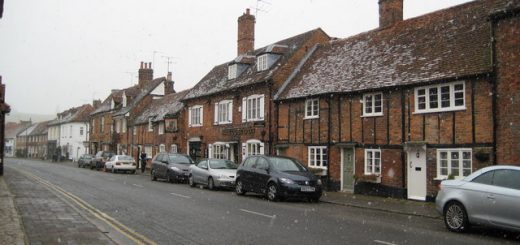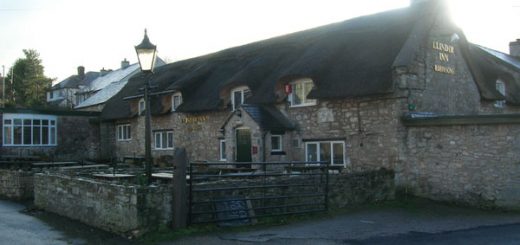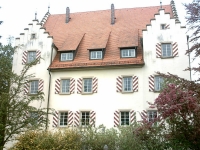Combermere Abbey Photograph
In December 1891, Sybell Corbet took an interesting photograph of the library at Combermere Abbey. When the film was developed the ghost like image of a figure could be seen sitting in one of the chairs. This figure was tentatively identified as Lord Combermere who’s funeral was taking place at the time the photograph was taken.
 Wellington Stapleton-Cotton, 2nd Viscount Combermere was born 24 November 1818 and passed away 1 December 1891 after being hit by a horse drawn carriage. Lord Combermere had been a Member of Parliament for Carrickfergus and a Colonel in the Life Guards. His father, Field Marshall Stapleton Stapleton-Cotton, 1st Viscount Combermere, Governor of Barbados and commander of the West Indian forces also had a brush with a famous ‘paranormal’ case and in 1820 ordered an investigation into the moving Chase family coffins in Barbados.
Wellington Stapleton-Cotton, 2nd Viscount Combermere was born 24 November 1818 and passed away 1 December 1891 after being hit by a horse drawn carriage. Lord Combermere had been a Member of Parliament for Carrickfergus and a Colonel in the Life Guards. His father, Field Marshall Stapleton Stapleton-Cotton, 1st Viscount Combermere, Governor of Barbados and commander of the West Indian forces also had a brush with a famous ‘paranormal’ case and in 1820 ordered an investigation into the moving Chase family coffins in Barbados.
I think some websites confuse these two Viscounts when discussing this photograph.
Combermere Abbey dates from 1133 and was originally founded by Hugh de Malbank for the Cistercian order. All but the Abbots House was destroyed in the 1538 Dissolution of the Monasteries and the estate came into the hands of the Sir George Cotton, Esquire of the Body to King Henry VIII and Vice-Chamberlain of the Household of Edward, Prince of Wales and his family retained the estate until 1919.
The Photograph:
Sybell Corbet stated the expose took roughly one hour and was obviously unmonitored as it was suggested that perhaps someone may have entered the room and sat on the chair whilst the photograph was being taken. However, everyone was supposed to be at the funeral. Given that it was not taken in controlled conditions some ones presence cannot I feel be ruled out entirely.




Re: Combermere Abbey Photograph
’All the Year Round’ was a weekly Victorian magazine owned and edited by Charles Dickens and following his death in 1870 by his son Charles Dickens Junior. In December 1870 it featured the following article concerning an experience at Combermere Abbey.
“The old part of this fine old mansion has been made into bedrooms and offices, not being in keeping with the splendour of modern requirements. Thus, what used to be called the coved saloon’ was first degraded into a nursery, and is now used as a bedroom. When the late Lord Cotton grew old, this room, in which he had played as a child, was occupied by his niece, Miss P., who before her marriage resided at the house. Lady Cotton’s dressing-room was only divided from the ‘coved saloon’ by a short corridor.
One evening Miss P. was alone, dressing for a very late dinner, and as she rose from her toilet glass to get some article of dress, she saw standing near her bed—a little iron one, placed out in the room away from the wall—the figure of a child dressed in a very quaint frock, with an odd little ruff round its neck. For some moments Miss P. stood and stared, wondering how this strange little creature could have entered her room. The full glare of the candle was upon its face and figure. As she stood looking at it, the child began to run round the bed in a wild, distressed way with a look of suffering in its little face.
“Miss P., still more and more surprised, walked up to the bed and stretched out her hand, when the child suddenly vanished, how or where she did not see, but apparently into the floor. She went at once to Lady Cotton’s room, and inquired of her to whom the little girl could belong she had just seen in her room, expressing her belief that it was supernatural, and describing her odd dress and troubled face.
“The ladies went down to dinner, for many guests were staying in the house. Lady Cotton thought and thought over this strange appearance. At last she remembered that Lord Cotton had told her that one of his earliest recollections was the grief he felt at the sudden death of a little sister of whom he was very fond, fourteen years old. The two children had been playing together in the nursery—the same ‘coved saloon’ —running round and round the bed overnight. In the morning, when he woke, he was told she had died in the night, and he was taken by one of the nursery-maids to see her laid out on her little bed in the ‘coved saloon’. The sheet which covered her was removed to show him her face. The horror he had felt at the first sight of death made so vivid an impression on him that in extreme old age he still recalled it. The dress and face of the child, as described by Miss P., agreed precisely with his remembrance of his sister. Both Lady Cotton and Miss P. related this to the writer.”